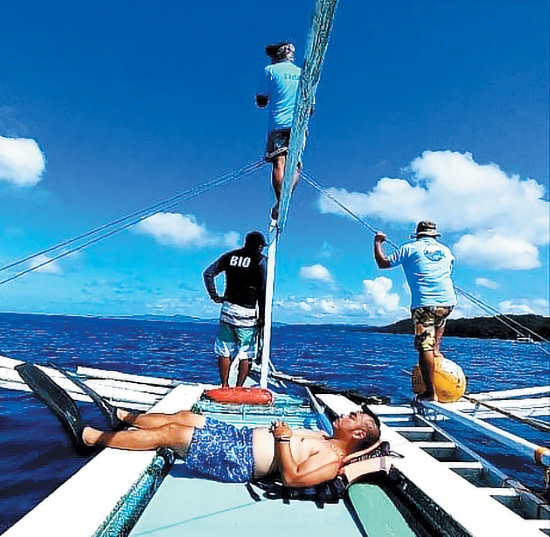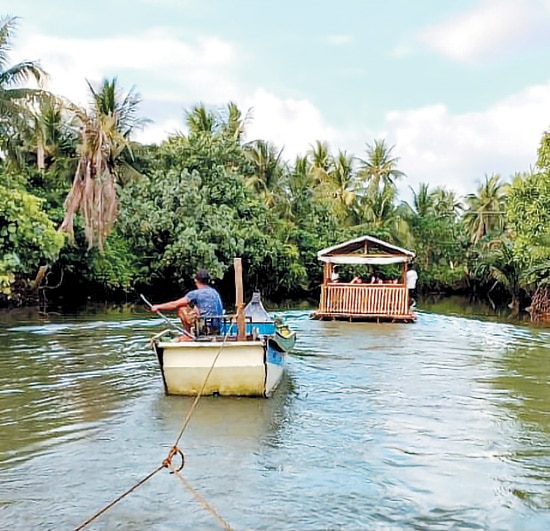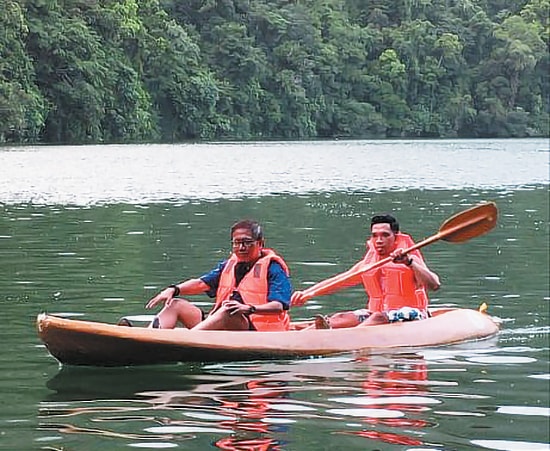“Don’t step on the coral,” a Norwegian girl berated me.
Loving nature entails being aware of one’s behavior toward it. Initially, I took offense at the admonition of my dive buddy but, eventually, I regretted what I did.
We were at the tail-end of a diving expedition in Sipadan, a tiny Malaysian island made famous by sharks, turtles, and other marine creatures. We were waiting for the speed boat to pick us up, so I rested on top of a huge coral head. I fancied myself as an environmentalist but realized I still had a lot to learn.
After all, corals are animals and not plants, as many people believe. It takes years before they regenerate.

Let’s teach ourselves
We are all polluters and the most we can do is to educate ourselves and other people regarding ecological practices.
During the 1980s, the buzzword was “ecotourism.”
According to the International Ecotourism Society (TIES), ecotourism can be defined as responsible travel to natural areas that conserve the environment, sustains the well-being of the local people, and involves interpretation and education.
Closely related to this is “adventure travel” which requires a modicum of fitness and athleticism. Proper training will teach the outdoor person not to damage corals, unnecessarily collect marine species, and trample on forest lands.
Both tourism programs advocate a maximum carrying capacity and have the same mantra: “Leave nothing but footprints; take nothing but pictures; kill nothing but time.”

Outdoor person or not, one has the responsibility to leave no trace while travelling.
On sustainability
Another catchword in the mid-’80s was the word “sustainability” which meant avoidance of the depletion of natural resources to maintain an ecological balance. It had a broader sense in “sustainable development” and a specific use in “sustainable housing.”
In the world of tourism, the UN Environment Program and the UN World Tourism Organization defined “sustainable tourism” as that which takes full account of the current and future economic, social, and environmental impacts, addressing the needs of visitors, the industry, the environment, and host communities.

Ecology as a science
The approach to sustainable tourism should be scientific for ecology, which is the backbone of sustainability and a dynamic science. Sustainable tourism is a good business model because its positive effects are far-reaching.
For instance, a marine reserve would attract more eco-tourists than one which allows its fish resources to be depleted. In Donsol, Sorsogon, whale shark hunters now work as spotters. Another example would be former poachers and hunters of wildlife who now act as safari guides. The possibilities are endless.
Commodification
Exploitation in any form should be eliminated. Culture should not be over-commercialized and improperly commodified. Cultural commodification is a concept used to denote a process where aspects of a particular culture are packaged for tourists to purchase, as said by Cojen in 1988.
There is a thin line whether commodification is boon or bane. The first step would be to get the approval from the rightful authorities of a community such as its elders or even a government agency tasked to protect them. A major factor would be how money affects their culture and people. The community should benefit more than the businessmen.
There are always two sides of a coin. With the consent of the community, their culture can be perpetuated. Authenticity should be preserved while trying to balance culture and economy. The tourists and consumers should also be protected from fakeries and scams.
Aims and Objectives
Sustainable tourism aims to lower ecological impact. Let us hope that the closure of Boracay due to high coliform levels will not happen again. Community-based tourism needs to be encouraged so that the economic benefits will contribute greatly to the community. The environment should be clean and safe. We should respect wildlife and be considerate of other visitors and all of these can be achieved with proper planning.
Tourism generates a lot of income for a nation’s economy. Its contribution encompasses real estate, infrastructure, and the hospitality business. To be sustainable is to be stable. If we adhere to the principles of environmental, social, and economic sustainability, all stakeholders are bound to benefit from tourism endeavors. So, the next time you travel, think of your children who can enjoy the same experience. And please, don’t step on the coral!
* * *
JP Ordoña (Manilakad) leads Manilakad Walks in Intramuros, Binondo, Quiapo, and more. In between, he writes, climbs, dives and more. Let him guide you to several walking destinations in Manila. Manilakad (JP Ordoña) can be reached on Facebook Messenger or through text at 0916-3597888.
